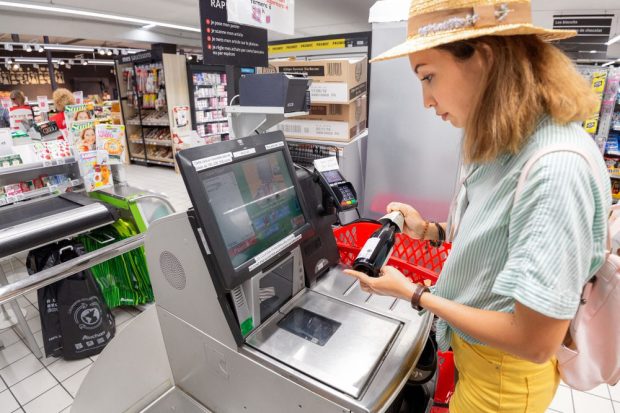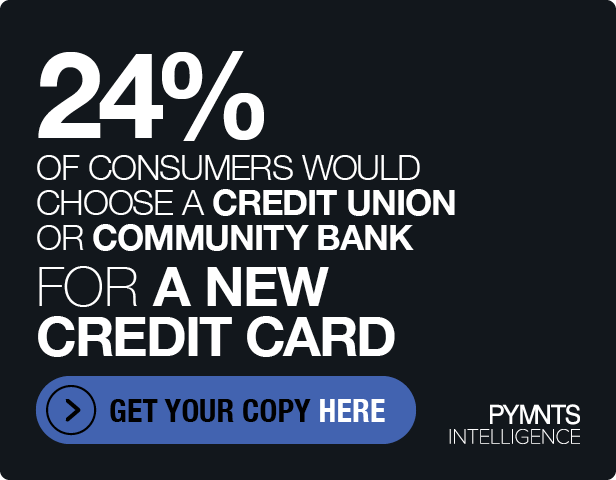Grabango: The Next Generation of Shopping Is Checkout-Free

As self-checkout evolves, point-of-sale tech startup Grabango maintains all future shopping will be autonomous.
In an interview with PYMNTS, the company’s Chief Revenue Officer Andy Radlow said that autonomous technology would eventually replace all other forms of checkout, self-service or otherwise.
“Self-checkout has been around for over 20 years and has been a compromise … and that is of course increased shrink, increased theft. And there have been countermeasures employed — computer-vision-based countermeasures Everseen, et cetera — but it’s still a healthy tension,” Radlow said. “Everybody at a secular level believes that the next generation of shopping is some form of checkout-free.”
He stated that even more cutting-edge forms of self-checkout such as own-device scan-and-go or smart carts, have not been able to remedy these issues, which, in his view, are born of consumers’ frustration with labor previously done by store employees now falling on their shoulders. On the other hand, he asserted, autonomous stores prevent this kind of shrinkage while reducing the amount of work consumers have to do to check out.
“That human effort is removed, and the convenience of simply going to pay and exiting is a net benefit to both parties,” Radlow argued.
Certainly, consumers are seeking out more convenient shopping experiences, with many feeling the friction of traditional checkout. According to data cited in the February edition of PYMNTS’ Retail Tracker® series, Innovating the Retail Checkout Experience, created in collaboration with LS Retail, 61% of consumers believe cashiers focus more on scanning than on customer satisfaction, and 30% believe they are a burden to clerks if they have too many items.
Indeed, the majority of retailers see self-service options as key to shopper loyalty — even more burdensome methods such as checkout kiosks. PYMNTS’ study “Navigating Big Retail’s Digital Shift: The New Payments Strategy Evolution,” created in collaboration with ACI Worldwide, which draws from a survey of 300 U.S. and U.K. retailers, finds that 51% believe the availability of self-service kiosks may lead consumers to favor one merchant over another.
It seems frictionless self-checkout can make a significant impact on shopper loyalty, keeping customers coming back.
“For our operations in the United States today, 80%+ of our traffic is repeat traffic on a day-by-day basis,” said Radlow.
This effect is especially notable given how challenging it can be for grocers to secure consumers’ loyalty. Data from the latest issue of PYMNTS’ Consumer Inflation Sentiment study, “Consumer Inflation Sentiment: The False Appeal of Deal-Chasing Consumers,” drawing from a February survey of more than 2,100 U.S. consumers, identifies a group of grocery shoppers, notes that only 17% of consumers are loyal to their go-to merchants, while 39% of consumers are persuadable (somewhat loyal to but open to more convenient or less expensive options) and 44% are deal chasers, shopping for the best price.
Additionally, Radlow noted that checkout-free technology could offer an eCommerce level of visibility into shelf-stocking and inventory in physical spaces, another key benefit for securing shopper loyalty.
PYMNTS’ study “Decoding Customer Affinity: The Customer Loyalty to Merchants Survey 2022,” created in collaboration with Toshiba Global Commerce Solutions, which drew from the results of a survey of more than 2,000 United States consumers, noted that 51% of shoppers said ensuring that the grocery products they want are in stock and available for purchase is key to their continued patronage of a given merchant.
“[We] are really unlocking the benefits you would expect from a technology that digitize the physical store space and allows you to manage it like an ecommerce site with lots of metrics, and lots of ways to improve the shopper experience,” Radlow said.

